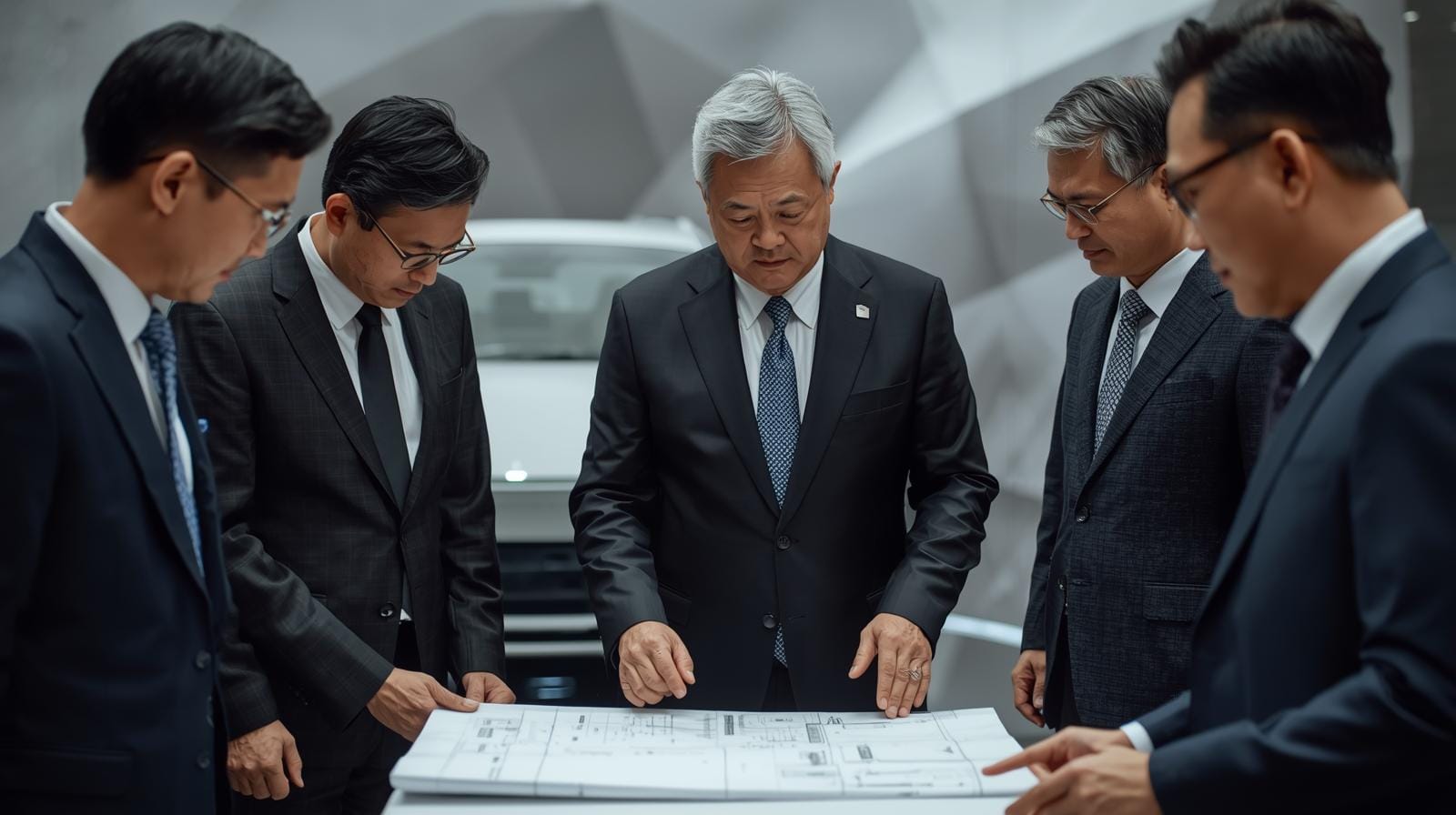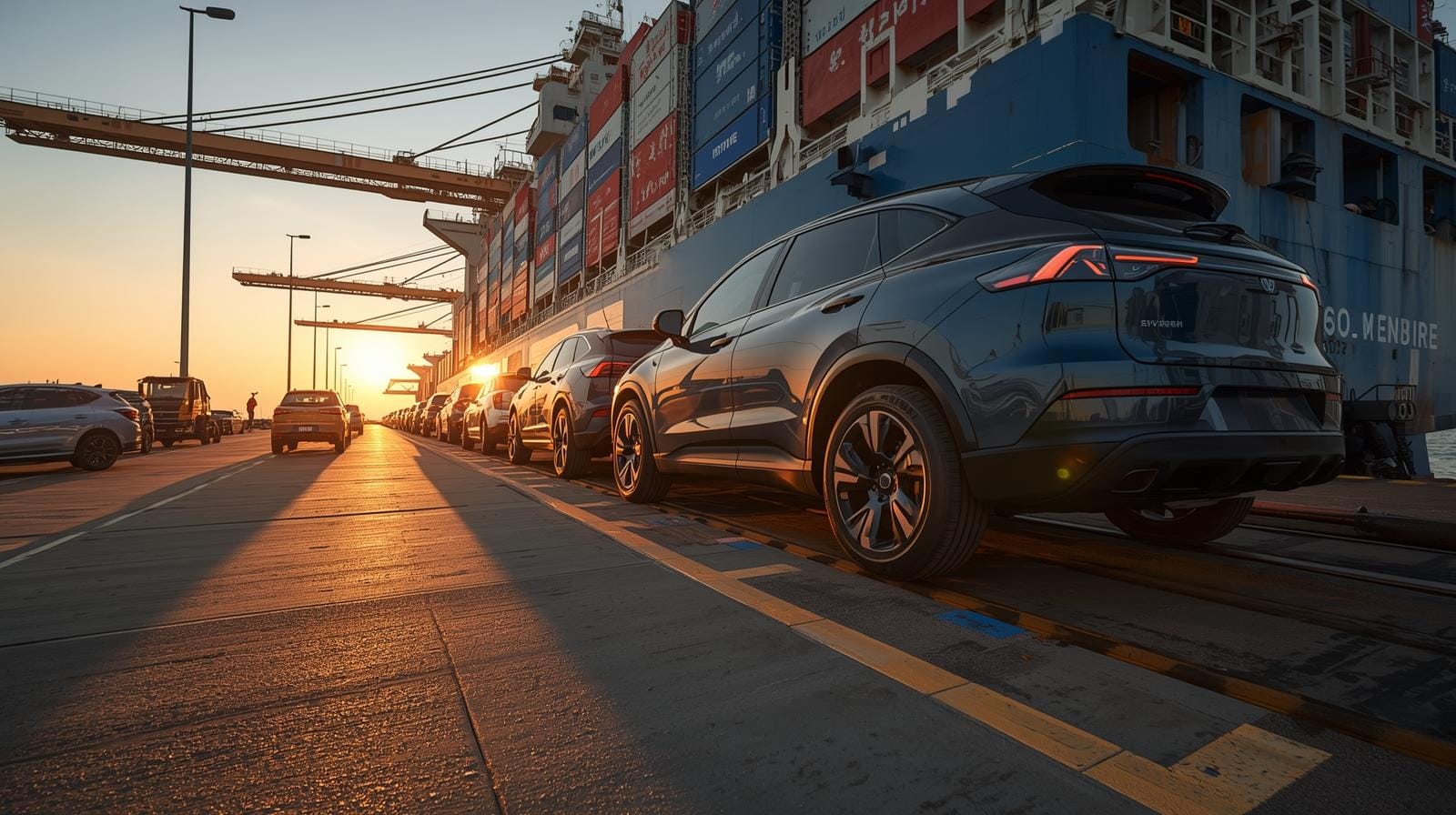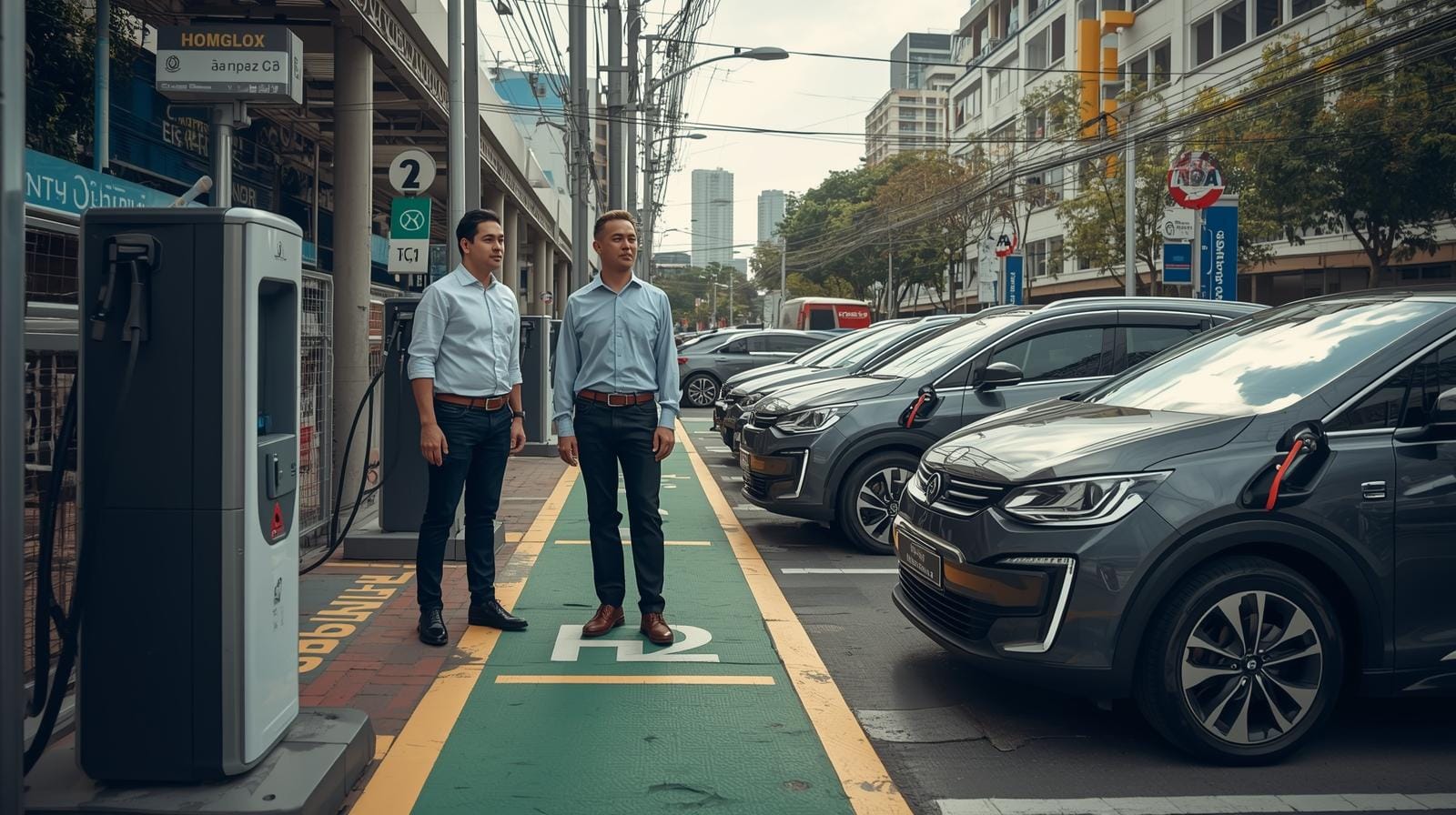Thailand’s Grand EV Plan: Ambition on Overdrive
Thailand’s leaders have put the auto industry in the driver’s seat of a bold transformation. The flagship “30@30” policy sets an ambitious target: by 2030, at least 30% of all vehicles produced in Thailand must be zero-emission EVs. This goal is more than aspirational branding – it’s a strategic pivot for a country long known as the Detroit of Asia, historically churning out combustion-engine pickups and sedans for global automakers. Now, with electrification reshaping the industry, Thailand is determined not to be left behind. Authorities have rolled out a suite of incentives under EV promotion schemes (dubbed EV 3.0 and 3.5) to turbocharge the transition. These include steep excise tax cuts, import duty waivers, and consumer purchase subsidies up to ฿150,000 per EV (about $4,500) during the initial phase. The message is clear: Thailand is “open for EV business,” courting manufacturers and buyers alike to embrace electric mobility.

Crucially, the government isn’t only eyeing new car sales – it’s targeting production. Generous benefits come with strings attached: automakers receiving import and sales perks must commit to local EV manufacturing within a tight timeframe. Originally, firms had to locally produce one EV for each imported EV by 2024 (and 1.5x by 2025), or face penalties. This aggressive localization push underscores Thailand’s intent to anchor the entire EV supply chain on its soil, from assembly lines to battery plants. It’s a high-stakes gamble to future-proof an auto sector that represents about 10% of Thailand’s GDP and millions of jobs. By setting hard targets and backing them with financial sweeteners, Bangkok is betting it can jump-start an EV ecosystem before competitors rev up their own engines.

A Surge of Investment – Led by China’s EV Titans
The response to Thailand’s EV push has been floods of foreign capital, particularly from China. In the past three years, over $4 billion (≈฿140 billion) in EV-related investment commitments poured in – from assembly plants and battery factories to supply chain projects. Auto giants like BYD and Great Wall Motors have staked major bets on Thailand. BYD, now the world’s second-largest EV maker, is investing ฿30 billion to build a massive factory complex on Thailand’s Eastern Seaboard. That plant, opened in mid-2024, already employs 6,000 workers and is gearing up to produce tens of thousands of EVs annually for both local sales and export. Great Wall Motors and SAIC (MG) have similarly upgraded Thai factories to roll out electric models. These moves are transforming Thailand into Southeast Asia’s EV factory floor, virtually overnight.

It’s not just factories – showrooms are filling with new models. Chinese automakers’ enthusiasm stems from a simple fact: Thailand is the region’s hottest EV market at the moment. In 2023–2024, EV sales in Thailand skyrocketed thanks to subsidies, making it the largest EV arena in ASEAN. Chinese brands seized the opening – from economy EVs like the Neta V to mid-range SUVs like the MG ZS EV and premium models by BYD. As a result, Chinese companies now command over 70% of Thailand’s EV sales, leaving Japanese incumbents scrambling. “For decades, Japanese automakers dominated Thai auto sales with pickups and SUVs. Now the tables are turning – in EVs, the Chinese are eating their lunch,” notes an industry insider. This changing of the guard has catalyzed even more investment: seeing BYD’s success, smaller Chinese EV firms (Hozon’s Neta, GAC’s Aion, etc.) also entered, further entrenching Thailand as China’s EV beachhead in ASEAN.
However, the investment surge comes with a catch. Much of it rides on continued government support and the assumption that Thailand can serve as both a sizable market and an export base. Companies like BYD aren’t just targeting Thai buyers; they envision Thailand as a springboard to supply right-hand drive EVs globally. That means the true payoff for Thailand will depend on its ability to sustain investor confidence and integrate into global EV supply chains for the long haul. The capital is here today – but will stay only if Thailand delivers the promised infrastructure, skilled workforce, and stable policies to support it.


Ready to take your next step in Thailand?
Connect with vetted local experts for visas, company setup, or property — no spam, no hidden fees.
Many readers have already found trusted local partners through our network.
Booming Output vs. Lukewarm Demand: A Market Balancing Act
The rapid influx of EV producers has vaulted Thailand’s manufacturing numbers upward – but can Thai consumers absorb all these new electric cars? Here the story hits a speed bump. Despite impressive growth, Thailand’s domestic EV demand remains modest relative to supply potential, raising concerns of an oversupply glut. In 2024, about 67,000 new EVs were registered in Thailand, roughly 11% of total auto sales. This was a big jump from virtually zero a few years prior, yet it occurred in a shrinking overall car market. Economic strains – high household debt, tighter credit, and post-pandemic caution – meant many Thais postponed car purchases, EV or otherwise. Total auto sales fell to 570,000 units in 2024, the lowest in 15 years. EVs managed to gain share (helped by subsidies and high fuel costs), but the absolute volume remained relatively low for the number of brands now jockeying in the market.

To illustrate the dilemma: automakers like BYD and Neta sold so many EVs so fast under the incentive scheme that they are now facing requirements to build tens of thousands of cars locally to “offset” their imports. The government’s solution to avoid a pile-up of unsold cars was to tweak the rules – extending deadlines and, critically, allowing automakers to count exports as 1.5x towards their local production quotas. Essentially, Thailand is saying: “If you can’t find enough Thai buyers, please ship EVs abroad and we’ll still consider our deal fulfilled.” In early 2025, this policy was adjusted to prevent a looming glut, with officials forecasting about 12,500 EVs will be exported from Thailand in 2025 and over 50,000 by 2026. Indeed, by September 2025, BYD began exporting Thai-made EVs to Europe and neighboring countries to relieve inventory pressure at home.

Ready to take your next step in Thailand?
Connect with vetted local experts for visas, company setup, or property — no spam, no hidden fees.
Many readers have already found trusted local partners through our network.
Despite these challenges, it’s not all gloom on the demand side. Thai EV adoption is accelerating – 2025 is on track to more than double EV sales from 2024. In the first seven months of 2025 alone, 66,000 EVs were registered (nearly the full previous year’s total). By year-end, EVs could exceed 20% of new car sales, a remarkable figure that places Thailand among the global leaders for EV market share growth. Importantly, this happened even as subsidies were slightly reduced under the new EV 3.5 scheme, indicating that consumer acceptance is rising. More models, more charging stations, and word-of-mouth about cheaper running costs have converted many Thai drivers from skeptical to enthusiastic. The typical EV buyer in Bangkok today isn’t just a rich early adopter – middle-class families are getting on board, attracted by EVs that are now cheaper than some comparable gas models and the prospect of fuel savings.
Still, policymakers are keenly aware that organic demand needs to catch up. To avoid a perpetual cycle of subsidies and inventory clearances, Thailand is investing in the ecosystem: expanding charging infrastructure (over 11,000 public charging points installed by end-2024), improving financing options, and using public fleets (buses, taxis, government vehicles) to boost EV usage. The next two years are pivotal. If Thailand’s economy picks up steam (lifting car-buying appetites) and if EV prices continue to fall, the domestic market could finally synchronize with the supply surge. If not, automakers may become increasingly reliant on exports – which brings its own risks and dependencies on global demand. For now, Thailand walks a fine line: revving up production while carefully stoking local demand, hoping the two meet in harmony rather than collision.

Rivals in the Rearview: Southeast Asia’s EV Race
Thailand’s quest to be an EV hub is unfolding amid a regional contest for investment and talent. In one corner is Indonesia, Southeast Asia’s largest economy, which boasts abundant nickel – a critical battery material. Jakarta has leveraged that resource to lure battery manufacturing projects and even dangled lucrative terms to woo Tesla (so far unsuccessfully for a car plant). Indonesia’s EV strategy heavily emphasizes electric two-wheelers (millions of e-motorbikes for its vast domestic market) and a future in battery cell exports. Yet when it comes to electric cars, Indonesia is still playing catch-up. In 2024, it sold just 43,000 EV cars (about 5% of its new car sales) – a fraction of Thailand’s volume. Thailand and Vietnam still outpace Indonesia in overall EV ecosystem maturity, a recent industry report noted, with Thailand selling over 70,000 EVs in 2024 (~12% share) and Vietnam reaching 16% share that same year. In other words, Thailand leads in getting EVs on the road, while Indonesia leads in raw materials and has a massive potential user base if affordability improves.
Then there’s Vietnam, a dark horse competitor fueled by homegrown ambition. Vietnamese automaker VinFast has emerged as a regional EV player, building EVs domestically and aggressively exporting to the U.S. and Europe. Vietnam’s domestic EV adoption jumped to an estimated 16% share largely thanks to VinFast’s push, even though in absolute terms its market is smaller than Thailand’s. Vietnam benefits from nimble policy support and a tech-savvy population, but it lacks Thailand’s deep automotive supply chain. Still, the Vietnamese government and companies are investing in charging infrastructure and battery plants, signaling they, too, want a slice of the EV pie.

Ready to take your next step in Thailand?
Connect with vetted local experts for visas, company setup, or property — no spam, no hidden fees.
Many readers have already found trusted local partners through our network.
The uncomfortable truth is that Thailand’s lead is not secure – both neighbors are gunning for the EV crown. Indonesia can offer something Thailand can’t: the raw minerals and potentially larger scale (if its huge population embraces EVs). Vietnam offers an increasingly strong innovation ecosystem and the advantage of a flagship local EV brand. Meanwhile, global automakers will spread their investments to hedge bets: indeed, BYD has projects in Indonesia (for battery materials) and plans in Vietnam, and other Chinese EV firms are exploring multiple ASEAN sites. Thailand cannot rest easy assuming all roads lead to Bangkok. A single policy misstep or an unaddressed bottleneck (like energy costs or talent shortages) could see new investments steer toward Jakarta or Hanoi instead.
From Thailand’s perspective, this competition has a silver lining: it spurs continual reform. The fear of losing projects to Indonesia recently pushed Thai officials to sweeten their incentive package – for instance, easing local production requirements when Indonesia announced EV import tariff cuts. It’s a bit of a race-to-the-top scenario where each country’s moves prompt the others to step up. For foreign investors and EV firms, this rivalry can be advantageous: governments are offering ever-better terms to attract factories and R&D centers. But it also means Thailand must execute its EV strategy flawlessly to maintain an edge. The nation’s decades of automotive experience give it a head start, but the finish line (regional EV dominance) is still unwon. In the rearview mirror, Thailand can see Indonesia’s and Vietnam’s headlights – and they are drawing closer.

Speed Bumps Ahead: Hard Truths and Real Risks
Even as Thailand races forward, serious challenges loom on the road to EV leadership. Perhaps the biggest risk is overcapacity. As noted, factories are being built to churn out far more EVs than the Thai market can presently consume. If global demand wavers – say, a recession hits key export markets – Thailand could be stuck with underutilized plants and a glut of unsold cars. The real risk here is that Thailand becomes an “EV Detroit” of a different kind: overbuilt and under-demanded, reminiscent of how some past industrial booms turned into busts. Policymakers are already wary. “If all manufacturers push to produce but hold back from exporting, the domestic market could face oversupply, sparking aggressive price competition,” one Thai official warned. This is not hypothetical – a price war has effectively begun. Chinese brands slashed EV prices in early 2025 by 15–30% to move inventory, pressuring profit margins. Great for consumers in the short term, but a red flag for the industry’s health long term.

Another major challenge is infrastructure and energy. While Thailand’s charging network in cities is decent, gaps remain, especially in rural areas. Expanding the grid and fast-charger availability nationwide will require continuous investment – and so will upgrading the electricity grid to handle thousands of EVs plugging in. There’s an irony: if Thailand’s EV dream succeeds, electricity demand will surge. Is the country ready to generate and distribute all that power cleanly? Much of Thailand’s grid still runs on natural gas and coal, raising environmental questions. An electric car charged on a dirty grid isn’t as green as it seems – a point not lost on critics who urge more renewable energy development in tandem. On the human capital front, Thailand needs more engineers and skilled technicians for EVs and batteries. The existing workforce is experienced with traditional cars; re-skilling programs are underway but will take time to bear fruit.

Ready to take your next step in Thailand?
Connect with vetted local experts for visas, company setup, or property — no spam, no hidden fees.
Many readers have already found trusted local partners through our network.
Then there’s policy continuity. Thailand’s political landscape can be volatile. The EV push has bipartisan appeal (it’s economic development, after all), but generous incentives can become political footballs. A change in government or budget priorities could scale back support prematurely. Moreover, complex regulatory hiccups – from local content rules to recycling regulations for batteries – still need ironing out. Investors crave stability: the current incentives run through 2025–2027, but what happens after? Clarity on long-term tax policy (will EVs remain virtually tax-free?) and infrastructure funding will determine whether companies see Thailand as a decades-long base or just a short-term assembly stop.
The uncomfortable truth is that Thailand is navigating uncharted territory. No country in the region has attempted an EV leap this fast. Skeptics point out that Thailand has announced big plans before that under-delivered. For instance, years of talk about shifting to green energy resulted in only incremental gains. Will EVs be different? Alexander Vance, a contrarian expat investor, doesn’t mince words: “Everyone’s high-fiving Thailand’s EV boom, but look under the hood – it’s driven by state subsidies and Chinese money. Take those away, and what do you have? The Thai consumer isn’t fully sold yet, the grid’s not ready, and regional competitors are circling. I’ve seen booms fizzle here before,” Vance notes with a dose of skepticism. His viewpoint, while blunt, underscores a sentiment that success is not guaranteed – Thailand must execute carefully to avoid becoming an EV cautionary tale.
Case Study: Pivoting in the EV Era
To appreciate both the promise and peril of Thailand’s EV wave, consider the story of one mid-sized auto parts firm in the Eastern Economic Corridor. For two decades, this Thai-owned company supplied engines and transmissions to Japanese automakers. As EVs gained traction, the demand for its products waned. Facing an existential threat, the owner – an expat entrepreneur who settled in Thailand – decided to pivot hard. In 2022 he invested in retooling the factory to produce aluminum housings for EV battery packs and electric motor components. The transition was rocky: traditional clients left, and new EV contracts were slow to materialize. Cash flow dipped, and layoffs loomed. But by late 2024, the gamble paid off when a Chinese automaker’s Thai subsidiary contracted the firm to supply parts for its new EV models. Today, the company is not only profitable again; it’s a key link in Thailand’s EV supply chain. The lesson? Agility and foresight can turn disruption into opportunity. Yet it was a risky road – one that many other SMEs now face as the industry shifts. Without adapting, some suppliers will be left in the dust, highlighting that Thailand’s EV revolution will have winners and losers at the micro level. The government is encouraging such transformations with training grants and soft loans, but ultimately each business must decide if and how to ride this electric tide.
The Road Ahead: Will Thailand’s EV Bet Pay Off? (Jonathan Reid’s Perspective)

Ready to take your next step in Thailand?
Connect with vetted local experts for visas, company setup, or property — no spam, no hidden fees.
Many readers have already found trusted local partners through our network.
Jonathan Reid, a seasoned financial columnist, observes that “Thailand’s EV strategy is a bold answer to a hard question: how can an economy reinvent a cornerstone industry on the fly?”
From a policy analyst’s viewpoint, many pieces of the puzzle are falling into place. Thailand has leveraged its traditional strengths – robust infrastructure, investor-friendly zones like the Eastern Economic Corridor, and established automotive know-how – to attract the world’s EV heavyweights. It is reaping short-term wins: capital inflows, technology transfer, and the burnishing of its image as a forward-looking economy. Yet Reid also cautions that the true measure of success will be endurance. “This isn’t a 100-meter dash; it’s an electric marathon,” he writes. If Thai officials continue to adapt (as they did by fine-tuning the EV policy to avert oversupply) and if they tackle second-order challenges (like upgrading the power grid and fostering local innovation in EV software and services), Thailand could emerge as the undisputed EV manufacturing hub of Southeast Asia – perhaps even one of the top global players. On the other hand, if complacency or external shocks intervene, the EV boom could stall, leaving shiny new factories as echoes of an overstated promise.

For now, most signs point to Thailand staying the course. Global automakers and local entrepreneurs alike are entrenched in the EV push, creating a strong lobby for the government to maintain support. The Thai public, too, is gradually warming to electric mobility, intrigued by the prospect of cleaner cities and high-tech jobs. A cultural shift is underway – car shows in Bangkok now feature dozens of EV models, universities are launching EV engineering programs, and even Thailand’s famed tuk-tuks are getting electric makeovers in pilot projects.
In Reid’s assessment, “Thailand has passed the point of no return on EVs. The bet will likely pay off, but not without volatility. Success will come to those who prepare for bumps along the way – whether companies hedging their market strategies or policymakers ready to refine incentives as conditions change.” In essence, Thailand’s EV gamble is entering its make-or-break phase: the foundation is built, the engines are humming – now the nation must steer through the hairpin turns of implementation to reach its destination as a true electric hub.

Ready to take your next step in Thailand?
The Thailand Advisor connects you with vetted local experts — trusted professionals who understand Thailand’s systems, pricing, and process.
Whether your goal is visa approval, company setup, or property investment, we’ll guide you with clarity — no spam, no hidden fees.
Answer a few quick questions to match with the right consultant for your goals.
Many readers have already found trusted local partners through our network.










